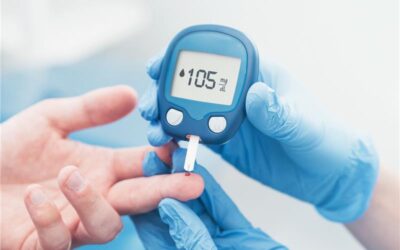Case Study
Improve Screening for Inborn Errors of Metabolism
This study leverages Metabolon’s technology to measure GABA-transaminase by profiling not only cerebrospinal fluid (CSF), but also plasma and urine.
The analysis of plasma or urine is less invasive and less expensive than a lumbar puncture and can be performed faster than CSF analysis. This could also lead to early detection of disease, which can result in expedited treatment.
The analysis of plasma or urine is less invasive and less expensive than a lumbar puncture and can be performed faster than CSF analysis. This could also lead to early detection of disease, which can result in expedited treatment.

The Challenge: Improve Screening for Neurometabolic Diseases
Gamma-aminobutyric acid (GABA) transaminase deficiency, also known as 4-ABAT deficiency, is an inborn error of metabolism (IEM) caused by mutations in the ABAT gene. Clinically, GABA-transaminase deficiency presents with hypotonia, seizures, psychomotor retardation, and electroencephalogram (EEG) abnormalities and is often associated with death in childhood. Biochemically, the inhibition of GABA transaminase activity results in the accumulation of GABA in the cerebrospinal fluid (CSF), subsequently leading to elevated levels of 2-pyrrolidinone, succinimide, and succinamic acid. For that reason, the measurement of GABA in CSF is currently the main method of diagnosis. However, collecting an appropriate and necessary volume of CSF can be challenging, and rigorous sample handling and storage protocols are required to preserve CSF samples appropriately.
Metabolon Insight: Use Less-Invasive Sample Type in Rare Disease Screening
In this study, the Metabolon Global Discovery Panel was used to profile over 1,000 plasma, CSF, and urine samples from four subjects with GABA-transaminase deficiency, a standard reference pediatric population, and several subjects without variants in ABAT taking different medications that inhibit GABA metabolism (n = 93).1
The Solution: Metabolomics Data Detects GABA-transaminase Deficiency and Treatment Efficacy
Global metabolomics of plasma, urine, and CSF samples was performed on four subjects with GABA-transaminase deficiency and a normal pediatric population cohort. Metabolomics data revealed that the average 2-pyrrolidinone level was elevated by over 4.34 standard deviations in the plasma of subjects with GABA-transaminase deficiency relative to the normal reference population. Higher levels of 2-pyrrolidinone were also detected in the urine and CSF of subjects with GABA-transaminase deficiency. Succinimide was detected in all plasma and CSF samples from GABA-transaminase deficiency patients but was not detected in enough samples of the healthy reference control population to allow the calculation of Z– score reference ranges. Additionally, Z-scores for succinamic acid in plasma and CSF samples from GABA-transaminase deficiency patients ranged from 0.62 to 2.25.
This study also aimed to elucidate whether pharmacological treatments that affect GABA metabolism can inhibit GABA-transaminase. The goal was to improve the ability to accurately screen and diagnose GABA-transaminase deficiency. They found that compared to the reference population, 2-pyrrolidinone levels were significantly higher in patients treated with vigabatrin but not with topiramate, levetiracetam, baclofen, and valproate.
The Outcome: Metabolon Can Use Less-Invasive Sample Types to Screen for Rare Diseases and Inform Treatment
This study validates Metabolon’s ability to identify GABA-transaminase deficiency by profiling plasma and urine samples, not only via CSF. The analysis of plasma or urine is less invasive and less expensive than a lumbar puncture and can be performed faster than CSF analysis. This could also lead to early detection of disease, which can result in expedited treatment. In the future, this technology could track how patients respond to treatment to differentiate responders from non-responders. Monitoring 2-pyrrolidinone in patients with GABA-transaminase deficiency levels via targeted metabolomic profiling may inform the efficacy of a therapeutic intervention. These data show that metabolomics provides not only an informed approach to diagnosing GABA-transaminase deficiency but also distinguishes them from other sources of GABA/2-pyrrolidinone elevations that may otherwise confound targeted metabolomic analysis of GABA metabolism.
References
1. Kennedy AD, Pappan KL, Donti T, Delgado MR, Shinawi M, Pearson TS, et al. 2-Pyrrolidinone and Succinimide as Clinical Screening Biomarkers for GABA-Transaminase Deficiency: Anti-seizure Medications Impact Accurate Diagnosis. Front Neurosci. 2019;13:394. Epub 20190508. doi: 10.3389/fnins.2019.00394. PubMed PMID: 31133775; PubMed Central PMCID: PMC6517487.






